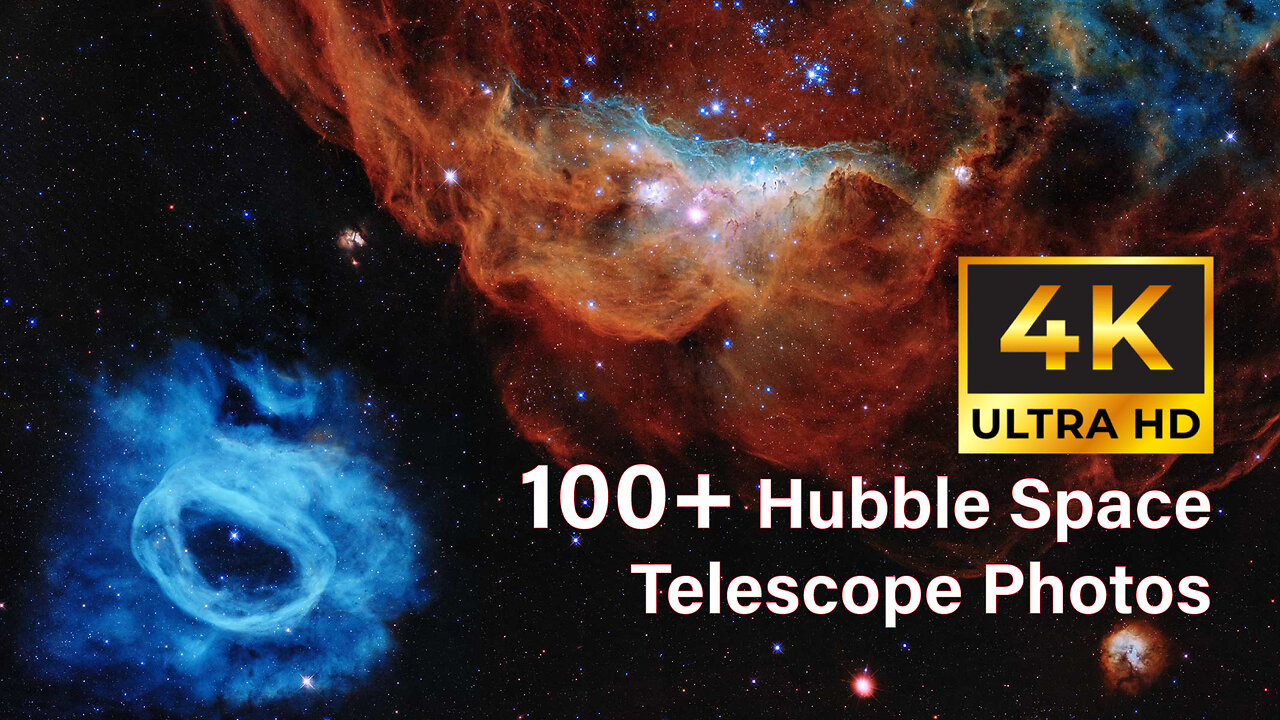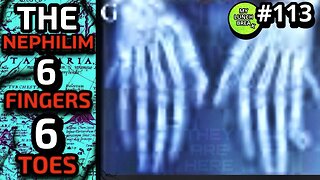Premium Only Content

100+ Hubble Space Telescope Photos ♥ Ultra HD (4K) ♥ Relax Music ♥1 Hour ♥ Slideshow
The Hubble Space Telescope (HST) is a space telescope that was launched into low Earth orbit in 1990, and remains in operation. Although not the first space telescope, Hubble is one of the largest and most versatile, and is well known as both a vital research tool and a public relations boon for astronomy. The HST is named after the astronomer Edwin Hubble, and is one of NASA's Great Observatories, along with the Compton Gamma Ray Observatory, the Chandra X-ray Observatory, and the Spitzer Space Telescope.
With a 2.4-meter (7.9 ft) mirror, Hubble's four main instruments observe in the near ultraviolet, visible, and near infrared spectra. Hubble's orbit outside the distortion of Earth's atmosphere allows it to take extremely high-resolution images, with substantially lower background light than ground-based telescopes. Hubble has recorded some of the most detailed visible light images ever, allowing a deep view into space and time. Many Hubble observations have led to breakthroughs in astrophysics, such as accurately determining the rate of expansion of the universe.
The HST was built by the United States space agency NASA, with contributions from the European Space Agency. The Space Telescope Science Institute (STScI) selects Hubble's targets and processes the resulting data, while the Goddard Space Flight Center controls the spacecraft.
Space telescopes were proposed as early as 1923. Hubble was funded in the 1970s, with a proposed launch in 1983, but the project was beset by technical delays, budget problems, and the Challenger disaster (1986). When finally launched in 1990, Hubble's main mirror was found to have been ground incorrectly, compromising the telescope's capabilities. The optics were corrected to their intended quality by a servicing mission in 1993.
Hubble is the only telescope designed to be serviced in space by astronauts. After launch by Space Shuttle Discovery in 1990, four subsequent Space Shuttle missions repaired, upgraded, and replaced systems on the telescope. A fifth mission was canceled on safety grounds following the Columbia disaster (2003). However, after spirited public discussion, NASA administrator Mike Griffin approved one final servicing mission, completed in 2009. The telescope is operating as of 2016, and could last until 2030–2040. Its scientific successor, the James Webb Space Telescope (JWST), is scheduled for launch in 2018.
_________
Are you fascinated by the beauty of space? Do you enjoy exploring the wonders of the universe through captivating imagery? Then get ready to embark on a visual journey through the cosmos with our space photo slideshow.
Our carefully curated collection of astronomical imagery showcases the breathtaking beauty of the universe, from stunning nebulae and galaxies to mesmerizing planetary landscapes. Each photo is a testament to the incredible power and beauty of the cosmos.
As you watch the slideshow, you'll be transported to distant stars and galaxies, marvel at the stunning colors and shapes of celestial objects, and gain a deeper appreciation for the vastness of the universe. Whether you're an astronomy enthusiast or simply someone who appreciates stunning visuals, our space photo slideshow is sure to leave you in awe.
Our slideshow is not just visually stunning but also informative, providing insights into the science behind each image. We'll explore the fascinating processes that shape the universe, from the formation of stars and galaxies to the mysteries of black holes and dark matter.
But our space photo slideshow is not just for education; it's also for pure entertainment. You'll feel a sense of wonder and awe as you watch the slideshow, and you'll be inspired to learn more about the cosmos.
So, sit back, relax, and enjoy our captivating space photo slideshow. Let us take you on a journey through the cosmos, and experience the awe-inspiring beauty of the universe.
------------------------
Music:
http://www.purple-planet.com - licensed under the terms of a Creative Commons Attribution License 3.0
-
 13:57
13:57
TimcastIRL
23 hours agoTrump NUKES IRS After DOGE Investigation, OVER 9000 Employees To Be FIRED
116K170 -
 13:35
13:35
Russell Brand
16 hours agoPFIZER JUST MADE THEIR NEXT MOVE AND EXPERTS ARE TERRIFIED
138K288 -
 1:15:57
1:15:57
Victor Davis Hanson Show
1 day agoOver Here, Over There: the Russo-Japanese War and Trumpian Peace Policy
65.6K35 -
 23:55
23:55
MYLUNCHBREAK CHANNEL PAGE
1 day agoThe Nephilim Are Here
92.8K87 -
 1:00:58
1:00:58
Break The Cycle w/ Joshua Smith
13 hours ago $1.72 earnedBreak The Cycle Ep. 247: Funny Guys w/ Robbie "The Fire" Bernstein
28.7K1 -
 41:26
41:26
TheTapeLibrary
1 day ago $9.94 earnedThe Disturbing Horrors of the Trans-Allegheny Lunatic Asylum
60.2K6 -
 10:07
10:07
Tundra Tactical
14 hours ago $6.72 earnedTRUMP'S HUGE GUN RIGHTS MOVE!
41.2K9 -
 1:53:23
1:53:23
Mally_Mouse
13 hours agoSaturday Shenanigans!! - Crowd Control - Content Warning
31K1 -
 17:24
17:24
Exploring With Nug
19 hours ago $3.67 earnedScuba Diving on Underwater Cars Searching For Missing Man!
41.7K1 -
 3:06:12
3:06:12
Jewels Jones Live ®
2 days agoWASTE, FRAUD & ABUSE | A Political Rendezvous - Ep. 110
94.5K30